Research
The Ridges and surrounding landscapes have been recognized as the most biologically diverse area in the state by the Wisconsin Department of Natural Resources.
To protect The Ridges, research initiatives must provide an understanding of biodiversity and ecosystem dynamics and connections to the larger landscapes or watersheds.
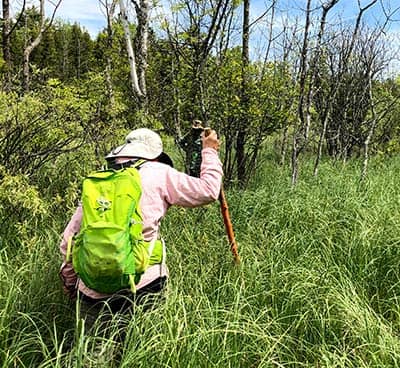
Proceeding with integrity, honesty and objectivity

Rooted in the scientific process
Research has been a critical component to The Ridges mission since its founding in 1937.
In 1933, Ridges founding member Albert Fuller became curator of botany at the Milwaukee Public Museum. Hard hit by the Depression, the museum canceled lecture programs, field research and museum publications. Using an infusion of federal funds, Fuller began designing ecological exhibits. He hoped that the dioramas would nurture conservation efforts. He also conducted field work, collecting specimens to add to the growing Herbarium at the museum.
It was Fuller’s inspirational presentations which sparked a grass roots movement throughout Baileys Harbor and the greater Door County community to protect the original 40 acres. Once the land was protected, these individuals and others formed The Ridges Sanctuary. The organization formed to continue the conservation movement of land protection, research and education under the banner of the original mission statement adopted on October 4, 1937:
“To acquire by gift, purchase or otherwise, part or all of the real estate in the area in the town of Baileys Harbor, Wisconsin known as ‘The Ridges’ or ‘The Bog’… To acquire and hold other pieces of real estate in Wisconsin and elsewhere, and to protect and preserve the native plant and animal life found thereon. And to carry on educational and scientific activities which will promote the cause of conservation and preservation…”
- Committed
- Science-based
- Reliable
- Refining protocols
Ridge and Swale Ecohydrology Project
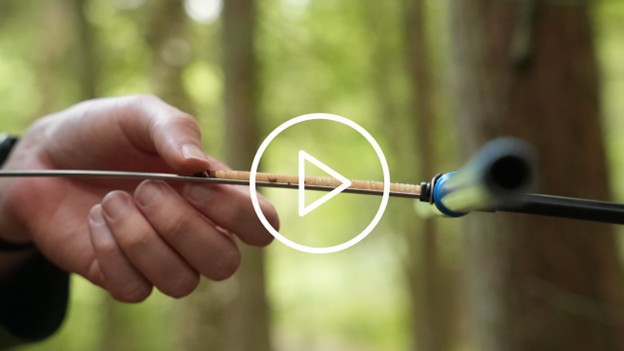
Because of the incredible diversity of habitats that make up The Ridges Sanctuary, numerous outside organizations utilize this area for their research. We have organisms here that are not found anywhere else in the county—or the entire state. Whether the studies are directed at gathering baseline inventory information, focused on the symbiosis of species, or understanding the intricate relationships between groundwater and Lake Michigan, each adds to the overall picture of our environment for us and future generations.
Watch the video on our Ridge and Swale Ecohydrology project.
Research For Restoration
Boreal Climate Survivability Project

As climate change transforms ecosystems across the globe, the Ridges Sanctuary is leading a forward-looking initiative in Door County.
The Boreal Climate Survivability Project is in partnership with the Climate Change Coalition of Door County and the Lakeshore Natural Resource Partnership. It studies the adaptability of trees and other species in various habitats, from disturbed boreal forest to upland and lowland temperate sites.
Over a three-year span, site-specific native trees will be systematically and progressively planted in five plots, based on carbon sequestration, survivability, and climate resilience. The study will utilize genetically unique tree varieties, including conifers (pines, spruces, firs, cedars, hemlocks) and deciduous trees (birches, maples, oaks, black cherry).
Staff and volunteers will monitor tree growth, soil conditions, climate variables, mammal and other species. Using this data, the project will identify tree species and genetically unique varieties that can thrive under changing climate conditions. This will inform how we can best help forest health and reforestation efforts for the next decade.
Citizen Science
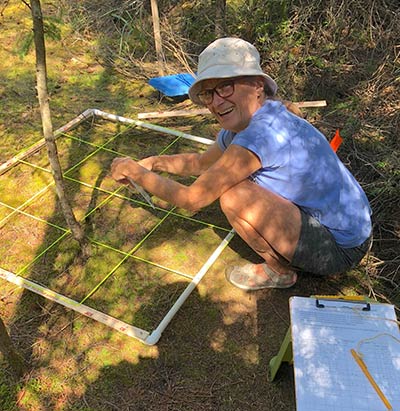
Citizen science is the collection and analysis of data relating to the natural world by members of the general public, typically as part of a collaborative project with professional scientists.
Citizen science is not only interesting and useful – it’s fun! In fact, anyone can do citizen science and make a difference. The Ridges Sanctuary currently hosts and facilitates several citizen science programs. We utilize volunteers to collect important data for a variety of uses. Current citizen science projects that utilize Ridges volunteers include:
Water Action Volunteers Stream Monitoring
A WDNR program where teams of two volunteers are assigned to local streams to measure several variables that monitor stream health. Monitoring occurs once a month from May through October.
Plant Inventory
A collaboration effort including UWGB staff and a volunteer cohort. Goals are to develop and implement a photographic record and comprehensive plant inventory of The Ridges Sanctuary properties.
Christmas Bird and Crane Counts
A partnership with the National Audubon Society where volunteers take one day in December to document bird species. Every spring, volunteers are assigned a site to observe and record crane numbers and behaviors for the International Crane Foundation.
Monarch Watch
An international monarch tagging event that The Ridges celebrates by hosting a local tagging event every August. Citizens can sponsor a tag and track individual monarch butterflies.
Orchid Restoration
Orchid research and activities include trekking, plot monitoring, statistician work, tending to the shade house, inventory of our current orchid populations, germination techniques, and identifying the ongoing threats to these populations.
Sucker Monitoring
A collaborative effort through the Shedd Aquarium where volunteers monitor Great Lakes sucker migration into streams during the spring.
Budburst Phenology
A collection of valuable information about seasonal plant cycles in a consistent way across the country through Project Budburst. Data is used to learn more about the responsiveness of individual plant species to changes in climate locally, regionally, and nationally.
Bald Eagle Nest Watch
A program in partnership with the DNR and the Southern Wisconsin Bird Alliance. It seeks to better understand how Bald Eagles are doing in Wisconsin. Participants are matched with a Bald Eagle nest and visit once per week for an hour. They observe and document the presence of young and other notes. Weekly visits continue until the young fledge.
Volunteers can choose a project of their interest to get involved in at The Ridges. Or they can participate in multiple programs based on availability. The more interest garnered from the area’s citizens, the more opportunities conservation organizations like The Ridges can provide. There are programs that The Ridges isn’t currently participating in but is looking to revive or implement in the near future, such as the Bumble Bee Brigade.
If you have interest in participating in current or future citizen science programs or want to learn more, contact Tony Kiszonas at tony@ridgessanctuary.org or call 920-839-2802.
Dwarf Lake Iris Restoration
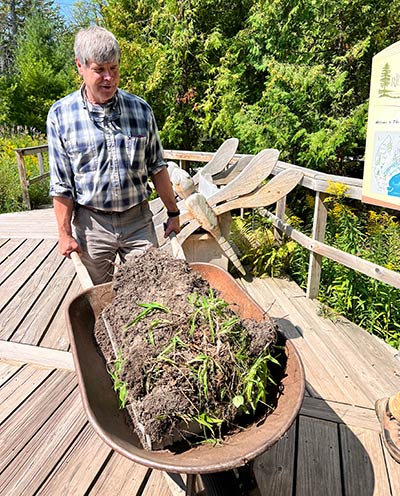
The dwarf lake iris (Iris lacustris) is a small, showy iris native to northern Great Lakes coastal habitat that is declining due to a number of threats, including development and forest encroachment.
Populations of this rare wildflower are present in the Range Light Corridor but are declining. The Ridges Sanctuary has conducted tree removal along the Range Light Corridor as part of a dwarf lake iris restoration project. The work aims to study and promote existing dwarf lake iris populations in the Corridor. The long-term goal is translocating and restoring the species to other suitable areas of the Sanctuary. Tree removal provides light conditions required for the plant. Additionally, it allows The Ridges to conduct experimental research to better understand preferred light conditions and inform future restoration efforts.
Tree removal also restores the Range Light Corridor back to a 50-foot width that is free of tall vegetation. This is required by U.S. Coast Guard regulations to maintain visibility of the lights outward from Lake Michigan.
This project, advanced by a grant from the U.S. Fish and Wildlife Service’s Coastal Program, is critical for the preservation of the renowned cultural and natural history of the area. It also aligns with The Ridges’ priority to
protect and preserve rare and endangered plants for future generations, a vision we share with our founders.
Risk Mitigation Measures for Hine’s emerald dragonfly* and dwarf lake iris:
- Conducting tree removal in winter when the ground is frozen and snow cover is present.
- Prohibiting the use of machinery in swales and other sensitive wetland areas.
- Laying down matting when using heavy machinery to minimize ground disturbance.
- Cleaning any equipment and machinery to prevent introduction of invasive species.
- Refueling equipment away from the project area on nonporous surfaces to prevent groundwater contamination.
* The project area contains critical wetland habitat for the federally endangered Hine’s emerald dragonfly that is extremely sensitive to disturbance. The purpose for implementing these measures is to reduce harmful impacts to these rare species.
Hine’s Emerald Dragonfly
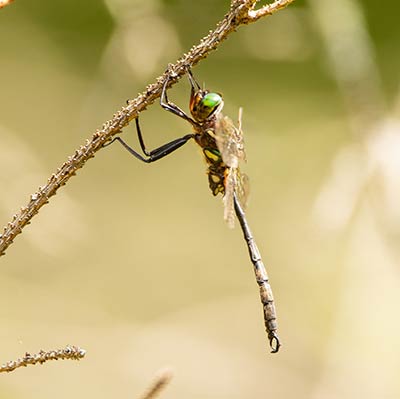
One of the most precious gems of the Sanctuary is the Hine’s emerald dragonfly (Somatochlora hineana).
This winged wonder is listed as Federally endangered. Some of its largest populations are found in Door County, particularly in The Ridges Sanctuary and surrounding wetlands. Researchers from the Illinois Natural History Survey, the University of South Dakota, and the Illinois State Museum are involved in research on the ecology of the Hine’s emerald. Since this dragonfly is federally protected, such studies are approved and carefully monitored by the U.S. Fish and Wildlife Service.
Field studies of the number and behavior of Hine’s emerald dragonflies, along with obtaining photographic records, have been conducted for several summers. Monitoring the status of this endangered dragonfly is ongoing at The Ridges.
During 2012 & 2013, The Ridges coordinated a project to develop best management practices regarding land use issues that affect groundwater quality and its impact on the Hine’s emerald dragonfly. The Hine’s spends four to five years in its larval stage. Throughout this time period, the Hine’s survival is dependent on sustained groundwater quality and quantity. The groundwater is fed through karst bedrock into coastal wetland habitat. There are 12 areas throughout the peninsula designated as critical habitat, although Hine’s have been identified at additional sites.
In 2008, the Wisconsin Geological and Natural History Survey delineated the groundwater contribution areas or the “recharge zones” feeding the Hine’s habitat sites. (They used the same type of model that well-head protection projections use.) The maps created through this project are management resources enabling local government and landowners to protect and preserve endangered resources and groundwater.
To learn more about the Hine’s emerald dragonfly, visit the U.S. Fish and Wildlife Service page.
Orchid Restoration
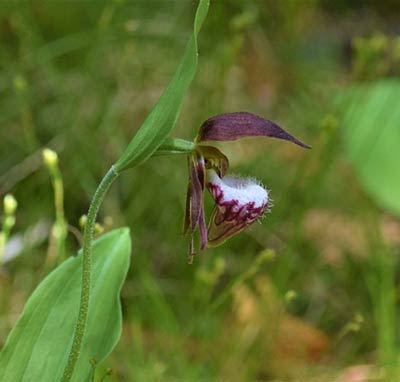
The Ridges Sanctuary is leading the way in terrestrial orchid research and restoration, including the threatened Ram’s head lady’s slipper.
Since our founding in 1937, The Ridges Sanctuary has had a vested interest in native orchid research. The beauty of these flowers is what attracted conservationists to the property over 80 years ago, and their continued survival across our 1,700+ acres is a critical component of our mission today. To date, we have been able to locate 29 of Wisconsin’s 40 species of native orchids within the Sanctuary. Unfortunately, there are species that have disappeared from the landscape and populations that are dwindling in numbers. Our goals are to inventory our current orchid populations, understand the specific environmental conditions and germination techniques required by each species, and identify the ongoing threats to these populations which include habitat fragmentation, deer herbivory and climate change.
Through our collaboration with entities such as the North American Orchid Conservation Center (based at the Smithsonian Environmental Research Center), University of Wisconsin-Green Bay, Illinois College, Minnesota Landscape Arboretum, Chicago Botanic Garden, and others, we have quickly become a leader in orchid research in the Midwest. Our success with orchid research is due to the collaborative efforts of our staff, partner organizations, and citizen science volunteers. Read our blog about recent efforts to document and protect orchid species here.
Current Efforts:
- Long-term plot monitoring for the Ram’s head lady’s slipper
- Orchid asymbiotic germination
- Inventories of orchid populations across the entire Sanctuary
- Developing institutionalized processes and protocols for the preservation and protection of native plant species
- Identification of mycorrhizal fungi associates
Past Publications:
Fall 2015 Sanctuary Newsletter Special Issue on the Orchid Restoration Project
Ridge and Swale Echohydrology Project

Understanding the Impact of Great Lakes Water Levels on Coastal Groundwater and Forests
Steve Loheide (Professor, UW–Madison), Evan Larson (Professor, UW–Platteville), and Eric Kastelic (PhD student, UW–Madison) are investigating how changing water levels in the Great Lakes affect groundwater flow and storage in coastal regions. Their research focuses on the ridge and swale wetlands along the Lake Michigan shoreline. By combining groundwater monitoring with tree-ring analysis, they aim to uncover how fluctuations in aquifer water levels influence forest productivity over time. Periods of low lake levels are expected to align with lower groundwater tables in nearby coastal aquifers.
According to their framework, when the water table drops in forested wetlands, tree roots have reduced access to groundwater. This limited access can increase water stress, which in turn may result in narrower annual tree rings, a sign of reduced growth. Conversely, during times of extremely high lake levels, areas near swales may experience saturated root zones. These overly wet conditions can reduce oxygen availability to tree roots, also limiting growth and reducing transpiration. This type of oxygen stress may likewise appear in tree-ring records as years of reduced growth. Together, these tree rings serve as a long-term archive of how groundwater availability—linked to Great Lakes water cycles—has influenced forest growth through time.
Watershed Study
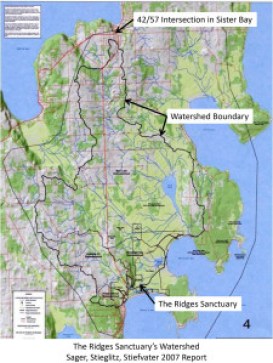
In 2006, The Ridges Research Committee worked with researchers and students at UW-Green Bay on a study of water quality in the Sanctuary.
The study’s primary goal was to gather baseline data on concentrations of heavy metals, nutrients, and minerals in the surface- and groundwater in the Sanctuary. This is especially important because several plant and animal species here are closely dependent upon good water quality for their survival. Water samples were taken periodically from small groundwater wells, and from springs and swales.
Results indicate that water quality of both the surface and groundwater at The Ridges is very good. Plus, future studies will enable us to compare and assess any changes in our water quality.
Clark Lake & Logan Creek Watershed Study
The Ridges Sanctuary’s Logan Creek Property includes over 2,500 feet of shoreline on Clark Lake and Logan Creek, making the protection of the lake and its surrounding habitats a high priority. From 2005-06, the Clark Lake Advancement Association and the UW-Stevens Point Center for Watershed Science and Education conducted a comprehensive study of Clark Lake, Logan Creek, and their watersheds. The study included water quality sampling of the lake and creek, stream flow measurements, macroinvertebrate sampling, and a fisheries study. Data collected during the study was used to develop a long-term plan for land use and water quality protection in the watershed. As a result, lake and stream habitats will be protected.
A Lake Management Grant from the Wisconsin Department of Natural Resources provided funding for the study.
Research Impact

15,000+
Individual orchids recorded

29
Orchid species recorded

25
HOBO monitors deployed
Plant Inventory Team Recorded
167
Species recorded on Moonlight Bay parcels
129
Species recorded on Ridges Road parcels
158
Species recorded in the Range Light Corridor